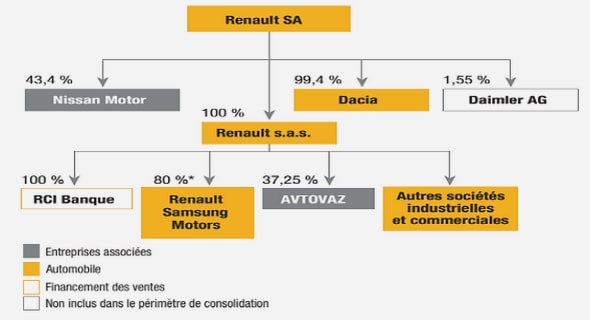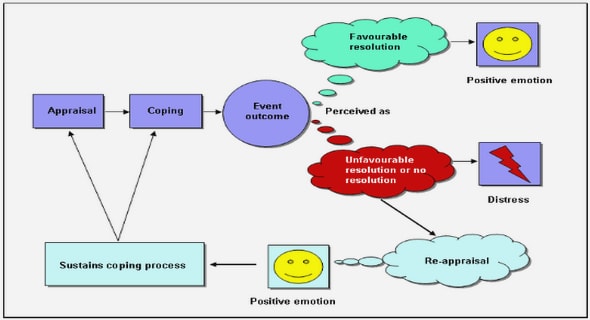Get Complete Project Material File(s) Now! »
From quadratic Hawkes processes to super-Heston rough volatility models with Zumbach effect
In this chapter we want to improve the rough Heston model in two directions. First we focus on the tail of volatility, which is known to be quite heavy. So, even though the rough Heston model manages to almost perfectly fit SPX options smile and does produce heavy volatility tails, we may wonder how to generate even fatter distribution queues. The other aspect, brought to our attention by Jean-Philippe Bouchaud, is the existence of so-called Zumbach effect. Essentially Zumbach effect is the fact that volatility is correlated to price trends. More precisely if price is trending down then volatility is going to be higher than in standard situations. This is also referred to as the feedback of price on volatility. It is a somehow vague notion which is hard to define and measure. To quantify this effect, econophysicists usually consider the difference between the correlation of past squared price returns with future volatility and the correlation of past volatility with future squared price returns. This quantity is typically positive on market data. The rough Heston model does enjoy this property when H ˙ 1/2. Nevertheless this is not because of a causal link between price paths and volatility, as described in the original idea by Zumbach. It is only due to leverage effect together with the fact that H ˙ 1/2. Hence we call this property of correlations weak Zumbach effect and introduce the strong Zumbach effect. It is defined as the fact that conditional law of future volatility is not fully determined by past volatility but by past prices and past volatility together. The rough Heston model does not reproduce the strong Zumbach effect because of its Markovian structure, see [EER18].
Our goal in this chapter is therefore to propose an extension of the rough Heston model that reproduces the Zumbach effect. We also wish that the instantaneous variance of volatility is equal to the classical square root term of Heston like models multiplied by a non-trivial process, in order to enhance volatility tails. Any model satisfying the latter property will be called a super-Heston model.
We proceed with the same methodology as that used in Chapter I. We first consider a sequence of models indexed by T . Each model is then rescaled from [0,T ] onto [0, 1]. Inspired by [BDB17], we model the market order flow using quadratic Hawkes processes which naturally generate Zumbach effect at the microscopic scale. We then investigate the possible limits of the sequence. We distinguish two types of limit depending on whether or not we are in a highly endogenous regime as in Chapter I. Each of those limits corresponds to a super-Heston rough volatility model and reproduces the Zumbach effect.
Quadratic Hawkes based model for the order flow
We start by defining our model. For a given T we model the arrival of market orders moving the price by the event times of a counting process N T . Each market order is either a buy or a sell market order of unit volume with probability 1/2. The price PT is then the difference between the total number of buy orders, N T,a and the total number of sell orders, N T,b .
Compared with the model of Chapter I, market order intensity is driven by two components. A linear self-exciting term HT , which corresponds to the intensity of a linear Hawkes process and a quadratic term, jZ T j2. Notice that Z T is a moving average of the price returns. Therefore when the past price is trending, Z T is large in absolute value and therefore ‚T is large, which will eventually lead to high volatility. Hence Model (3) basically generates Zumbach effect.
The process Z cannot be deduced from observation of V because of the square, so Zt0 is not ¾¡(Vs )s•t 0 ¢ measurable. So the law of the future volatility depends both on the past of volatility and price. This shows that the process Z generates Zumbach effect in Model (4).
It is important to remark that here there is no need to consider nearly unstable models (aT ! 1) to obtain stochastic volatility at the limit. This is in contrast with the situation described in Chapter I. However in Model (4), the Brownian motion driving the volatility is the same as that driving the price. We will see in the next section that when the model is nearly unstable at the limit, we get an extra source of randomness in the volatility. We also remark that in Model roughness of volatility is a consequence of the behavior in 0 of the function k whereas in Chapter I it is generated by the tail of the Hawkes kernel.
Nearly unstable case
We now investigate the situation where the model is nearly unstable at the scaling limit. More precisely we assume that aT converges to 1 as T goes to infinity. So we naturally take !T ˘ (1 ¡ aT )/„T . This is very similar to the case of nearly unstable linear Hawkes processes studied in Chapter I. Here also we take `T ˘ flT ` with (fl T )T ‚0 a positive sequence and ` L1(R¯) positive function with norm equal to 1 satisfying `(x) » x¡(1¯fi) for some fi 2 (0, 1). Such shape for the tail will generate rough volatility at the scaling limit, as for purely linear Hawkes. The main difference with the stable case is that we have to use the resolvent of the kernel `T to derive the limiting model.
Since quadratic Hawkes processes generalize linear Hawkes processes, that lead to the rough Heston model, Models (4) and (5) can be seen as extensions of the rough Heston model. Hence we expect them to outperform the rough Heston model in fitting market data. In particular we know that the rough Heston model, even though fitting very well the SPX options smile, fails to reproduce the concave shape of VIX options smile. Hence in the next chapter we investigate the joint calibration of SPX and VIX options smiles using a model inspired from (4) and (5).
The quadratic rough Heston model: fitting simultaneously historical volatility together with SPX and VIX smiles with a continuous model
In this chapter we address a longstanding question brought to our knowledge by Julien Guyon, which he refers to as the grail of volatility modeling : can we find a continuous model that allows for simultaneous fitting of SPX and VIX options smiles? We focus here on a specific model, the quadratic rough Heston model, which is an extension of Model (4). We show that this parsimonious model can achieve an almost perfect fit of SPX and VIX options smiles at the same time.
Table of contents :
Introduction
1 Part I: Microstructural foundations of volatility properties
1.1 Chapter I: No-arbitrage implies power-law market impact and rough volatility
1.2 Chapter II: From quadratic Hawkes processes to super-Heston rough volatility models with Zumbach eect
1.3 Chapter III: The quadratic rough Heston model: tting simultaneously historical volatility together with SPX and VIX smiles with a continuous model
2 Part II: Optimal control for point processes
2.1 Chapter IV: Optimal market making with persistent order ow
2.2 Chapter V: Scaling limit for stochastic control problems in population dynamics
3 Part III: Market design
3.1 Chapter VI: How to design a derivatives market?
3.2 Chapter VII: Optimal auction duration: A price formation viewpoint
Part I Microstructural foundations of volatility properties
I No-arbitrage implies power-law market impact and rough volatility
1 Introduction
2 Market impact is power-law
2.1 Asymptotic framework and metaorders modeling
2.2 Market impact in the Hawkes setting
2.3 Scaling limit of the market impact
3 Macroscopic limit of the price
3.1 Scaling limit of the price process
3.2 Conclusion
4 Proofs
4.1 Proof of Theorem 1
4.2 Proof of Theorem 2
4.3 Proof of Theorem 3
I.A Appendix
I.A.1 Mittag-Leer functions
I.A.2 Tauberian theorems
I.A.3 Fractional derivative
I.A.4 A result on inhomogenous Poisson process
II From quadratic Hawkes processes to super-Heston rough volatility models with Zumbach eect
1 Introduction
2 Asymptotic behavior of purely quadratic Hawkes models
2.1 Scaling procedure
2.2 Assumptions and results in the purely quadratic case
2.3 Discussion of Theorem 1
3 General quadratic Hawkes models: the stable case
3.1 Suitable scaling in the general case
3.2 Assumptions and results in the presence of a linear component in the stable case
3.3 Discussion of Theorem 2
4 Nearly unstable quadratic Hawkes models
4.1 An adapted scaling procedure in the nearly unstable case
4.2 Assumptions and results in the nearly unstable case
4.3 Discussion of Theorem 3
5 Proofs
5.1 Proof of Theorem 1
5.2 Proof of Theorem 2
5.3 Proof of Theorem 3
III The quadratic rough Heston model: tting simultaneously historical volatility together with SPX and VIX smiles with a continuous model 93
1 Introduction
2 Rough volatility and the Zumbach eect
3 The quadratic rough Heston model
3.1 The quadratic rough Heston process
3.2 Parameter interpretation
3.3 Innite dimensional Markovian representation
4 Numerical results
Part II Optimal control with point processes and application to nance
IV Optimal market making with persistent order ow
1 Introduction
2 Solving the market maker problem using viscosity solutions
2.1 Appropriate domain for the process X
2.2 Hamilton-Jacobi-Bellman equation associated to the control problem
2.3 Viscosity solutions: some denitions
2.4 Existence of an optimal control
3 How to approach the optimal control
3.1 Convergence of solutions and optimal controls
3.2 Solving the optimal control for K 2S E
3.3 Density of S E in the set of completely monotone function
3.4 Conclusion on approaching the optimal control
4 Numerical applications
4.1 The small dimension case
4.2 The large dimension case
5 Proofs
5.1 Formal denition of the probability space
5.2 Proof of Theorem 1
5.3 Proof of Proposition 1
5.4 Proof of point (i v) of Theorem 2
IV.A Proof of Lemma 1
IV.B A priori inequalities
IV.B.1 Hawkes processes
IV.B.2 A priori estimates on X
IV.B.3 Rewriting of the utility
IV.C Equivalence between the two denitions of viscosity solutions
IV.D Crandall Ishi’s lemma
IV.E Existence of R®,°
IV.F Proof of Lemma 2
IV.G Probabilistic representation of IPDE in high dimension
IV.G.1 Existence of a measure for the particle method
V Scaling limit for stochastic control problems in population dynamics
1 Introduction
2 From a discrete to a continuous population model
2.1 Denition of the discrete population models
2.2 Scaling limit of the sequence (XK )K¸0
2.3 Uniform exponential moments
3 Illustration of the study on a toy model
3.1 Discrete populations models
3.2 Continuous populations model
4 Convergence of BSDEs
4.1 Convergence of martingale representations
4.2 Convergence of BSDEs
5 Application to a control problem
5.1 The discrete problem
5.2 The continuous problem
5.3 Convergence of the value functions and of the optimal controls
6 Proofs
6.1 Proof of Theorem 1
6.2 Proof of Proposition 2
6.3 Proof of Theorem 2
6.4 Proof of Theorem 3
6.5 Proof of Theorem 4
6.6 Proof of Theorem 5
V.A Spaces and notations
V.B Change of measure for initial population
V.C Admissibility of the controls in the toy model
V.C.1 Discrete models
V.C.2 Continuous models
V.D Feller property of the model
V.E Martingale representation with respect to MX
V.F Proof of Proposition 1
V.F.1 Step 1: exponential moments for linear branching processes
V.F.2 Step 2: domination of XK by linear process
V.F.3 Step 3: conclusion
Part IIIMarket design 195
VI How to design a derivatives market?
1 Introduction
2 Market driven selection of the listed options
2.1 How to choose the strikes in order to match market demand?
2.2 Solving the quantization problem
2.3 Application
3 Incentive policy of the exchange
3.1 The market
3.2 Market maker’s problem and contract representation
3.3 Solving the exchange’s problem
3.4 Numerical results
3.5 Conclusion
VI.A Appendix
VI.A.1 Proof of the convergence of the Lloyd’s algorithm
VI.A.2 Stochastic basis
VI.A.3 Well-posedness of the optimization problems
VI.A.4 Dynamic programming principle
VI.A.5 Proof of Lemma 1
VI.A.6 Proof of Theorem 1
VI.A.7 Proof of Theorem 2
VII Optimal auction duration: A price formation viewpoint
1 Introduction
2 The model
2.1 Auction market design
2.2 Market makers and market takers
2.3 Clearing rule
2.4 A metric for the quality of the price formation process
3 Strategic market takers
3.1 Trading costs of market takers
3.2 Nash equilibrium
4 Optimal auction durations for some European stocks
4.1 Description of the data
4.2 Calibration of model parameters
4.3 Numerical results
1 Proof of Theorem 1
2 Computation of the expected square imbalance in the Poisson case
3 Existence of a Nash equilibrium
3.1 Nash equilibrium
3.2 Proof of Theorem 3
3.3 Proof of Corollary 1 and numerical method
4 Model extension: Market makers can cancel their limit orders
5 Proof of Lemma 1
Bibliography


